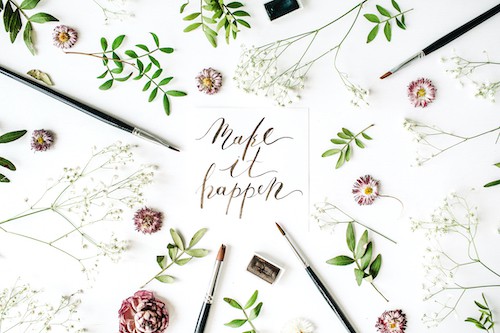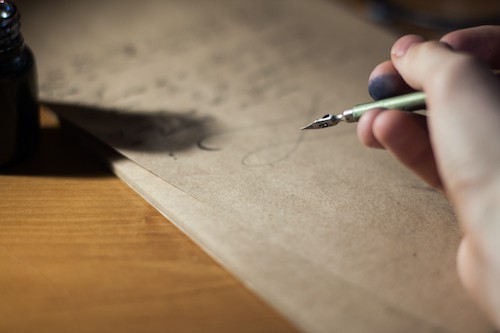Calligraphy and Hand Lettering Tips for Beginners

Calligraphy and hand lettering are two art forms that take practice to master. Luckily, with the right tools and a little patience, you’ll be on your way to perfect form!
From drawing and painting to sketching and sculpting, there’s an art form for every kind of artist. But, for those who love to embellish words, calligraphy and hand lettering can be ideal arts! While calligraphy is an ancient tradition, hand-lettered art is a more modern practice. There are plenty of things to learn, but what’s required more than anything is patience and practice. If you’re looking to learn these skills, we might be able to help!
What’s the Difference Between Calligraphy and Hand Lettering?
To many people, calligraphy and hand lettering may be the same thing. However, there are plenty of differences between these styles of writing. Calligraphy has a storied history that goes back to Ancient Rome when it was used for religious texts. While calligraphy is a writing style like a font, hand lettering is more whimsical. It’s a way of making art of letters, illustrating them so they’re a picture on their own. Calligraphy has many rules, but hand lettering can offer more creativity as a relatively new discipline. Whether you want to make stunning invitations or simply do it for yourself to spice things up in your Bullet Journal, there are plenty of options!
What are Some Tips for Calligraphy?
If you’re getting started with becoming a hand-lettering artist and calligrapher, there are plenty of ways to make it easier. Use our tips so you can succeed, and share your ideas on your favorite family app!
- Be Patient with Yourself – Learning anything new is never easy, so it’s important to go into it having patience. After all, calligraphy and hand lettering are not going to be learned in one session! Being patient will mean that you can learn from your mistakes while honing your craft.
- Practice Makes Perfect – It might be a cliché but the only way to truly learn something is to do it over and over. This will teach you a variety of different styles so you can become an old pro in short order!
- Take a Course – Whether you take calligraphy and hand lettering classes or find something free online, an expert’s tips can really help! There are plenty of great tutorials and videos out there that can improve your expertise. You may even want to invest in a starter kit!

What Kind of Tools Do You Need for Calligraphy?
Calligraphy and hand lettering are very specific arts and that means you’ll need the right tools. While paper is necessary, there are some other things to get you writing. You may even want to try faux calligraphy if you’re not quite up to the real thing yet!
- Nibs – The nib is the part of a calligraphy pen that will give your writing its stunning effect. There are many styles out there, but the best way to discover what you like is trial and error. Share your finds with others on FamilyApp!
- Straight Pen – The right pen is going to work with your hand so you can create the best letter around. Find something that is comfortable to hold and will work with any nib. You may even want to invest in brush pens for brush lettering.
- Ink – Ink is both the best and the worst part of doing calligraphy and hand lettering! It’s fun to work with but can be trying when you’re a beginner. Try ink that is not too watery to start out, as this will be easier to work with.

What Tools Do You Need for Hand Lettering?
Hand lettering may require a little bit of a talent and a lot of elbow grease, too. However, the tools you’ll need for this are a little different! If you find any favorites, be sure to share them on your favorite family app.
- Pencil – Calligraphy and hand lettering are all about putting your ideas on paper. A pencil with an eraser is the best for coming up with ideas you can’t quite commit to.
- Ruler – A ruler will ensure that you can draw parallel and straight lines when you need them. It will also help you arrange your hand lettering within a grid so you know what space you’re working with
- Markers – The kind of writing device you’ll use is where calligraphy and hand lettering differ. The thing that’s really going to make your hand lettering pop is color, and that’s where markers come in. Your imagination’s the limit when it comes to deciding what to use!
With the right pen or marker, you’ll be well on your way to a perfected calligraphy and hand lettering. Do you have any tips on how to learn writing fonts in style? Share them with other calligraphy and hand lettering artists in our comments! Practice makes perfect, but with patience, you might be a champion calligrapher soon.





